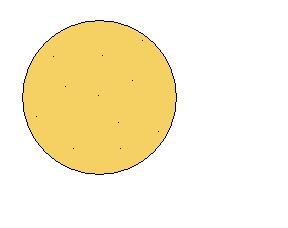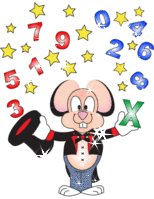Maths
We follow the Red Rose Mastery Maths Scheme of work at Reedley Primary School.
Autumn 1
Our units this half term are…
Week 1: Unit 1, Place Value, Addition and Subtraction
Week 2: Unit 1, Place Value, Addition and Subtraction
Children will begin to understand that in place value the position of the digit is important. In three-digit numbers, digits may be in the ones place or column, the tens place or column or the hundreds place or column. The digits allowed in each column are 0 to 9. When there are ten ones in a column, they should be exchanged for one ten and moved into the tens column to the left. When there are ten tens in a column, they should be exchanged for one hundred and moved into the hundreds column to the
left. When counting back, or subtracting, a hundred may need to be exchanged for ten tens to allow this to proceed. Similarly, a ten may need to be exchanged for ten ones.
Children begin to understand that one ten and ten ones have the same value and that one hundred and ten tens have the same value.
We have been using a range of different apparatus to partition, create, add and subtract numbers. The children enjoyed exploring different strategies that they can use to solve calculations.
Week 3: Unit 2, Length and Perimeter
The first time children learn about perimeter is in Year 3. We develop the children’s understanding of perimeter as a length around the outside of a shape. This is done initially by using straws to make the perimeter of different shapes, then by counting the length of the perimeter of a shape drawn on squared centimetre paper. The children really enjoyed the practical lessons using the straws.
Week 4: Unit 3, Statistics
By the end of the unit we were able to collect data in a tally chart and frequency table and use the data to draw a bar chart with a scale in
ones. Before we were able to interpreting bar charts it is useful for us to understand how they have been created so that the children have a clear understanding of the different elements of bar charts. The children were shown how to collect data in a tally chart. The children then learnt how to draw a bar chart from the
data.

We collected data from our class in regards to the children's favourite fruit. We gathered the data in a tally chart and then created a bar chart showing our findings. She some of our fantastic work below:

Week 5: Unit 4, Addition and Subtraction
Week 6: Unit 4, Addition and Subtraction


www.mathswithmum.com/column-addition/
In Year 3, we have been looking at column addition with and without exchnaginig.We dicussed how once we had ten ones we exchanged it for 1 ten stick, we were flying through our work! Have a look at some of our super work below:


www.mathswithmum.com
After mastering column addition, we moved onto column subtraction. We faced some challenges with exchanging but once we understood that we exchange a ten (stick) for ten ones (cubes), we were experts!! Take a look at our work below:
Autumn 2
Our units this half term are…
Week 1: Unit 4, Addition and Subtraction
Week 2: Unit 5, Multiplication tables (3× and 4×)
Week 3: Unit 5, Multiplication
We have been exploring the grid method to solve multiplication calculations
Week 4: Unit 6, Division
Week 5: Unit 7, Time
We have been learning to tell the time to the nearest 5 minutes
Week 6: Unit 8, 3-D shape

Spring 1
Week 1: Place value, addition and subtraction
Week 2: Multiplication

Week 3: Fractions

Week 4: Division

Spring 2
Our units this half term are:
- Week 1 2D shape/ angles
.png)
-
The last couple of weeks have been very busy in our class. We have completed many practical lessons to support our understanding of different areas of Maths. We have learnt that parallel lines can be straight, wavy or curved but never intersect. They always remain equal distance apart. We also learnt that prependicular lines don't always have to intersect but if they do they always intersect at a right angle.
We used the geo boards to create 2D shapes when given a set of propteries - such as a quadrilateral with pair of parallel lines. This really got us thinking!
A pentagon that has prependicular lines.
This was a challenge but we were able to use our prior learning to solve this.
- Addition Subtraction and Statistics
Previously, we practised using the column method to add and subtract three digit numbers. Building on that skill we began to use estimation by rounding to the nearest ten. Using the column method to calculate the answer then using the inverse to check if our answers were correct.



Summer 1
Week 1: Unit 17, Fractions
Week 2: Unit 18, Position and direction


Week 3: Unit 19, Time
Week 4: Unit 20, Addition and Subtraction
Week 5: Unit 20, Addition and Subtraction


Week 6: Unit 21, Multiplicaiton and Division

_ _ _ _ _ _ _ _ _ _ _ _ _ _ _ _ _ _ _ _ _ _ _ _ _ _ _ _

Recalling number facts is very important in Mathematics and as a school we place a great emphasis on recalling our times tables.
Do you know your timetables in any order? Can you do them in 3 minutes?
Below are some practise sheets for you to get yourself prepared so that you can work towards the awards.
- Bronze Certificate – 2, 5, and 10 times tables
- Silver Certificate – 3, 4, 6, and 11 times tables
- Gold Certificate – 7, 8, 9, and 12 times tables
- Amethyst Certificate – All tables mixed
- Emerald Certificate – 100 question challenge in three minutes!
- Hackmanite - 144 division and multiplication questions
- Panite - 140 questions designed to extend multiplication and division facts beyond 12x12
 Reedley Primary School
Reedley Primary School









![IMG_1872[1].JPG](/uploads/378/images/3RE/IMG_1872[1].JPG)























.JPG)
.JPG)
.JPG)
.JPG)
.JPG)
.JPG)
.JPG)
.JPG)
.JPG)
.JPG)
.JPG)
.JPG)
.JPG)
.JPG)
.JPG)
.JPG)
.JPG)
.JPG)
.JPG)
.JPG)
.JPG)

![IMG_3279[1].JPG](/uploads/378/images/3RE/maths/28.3.23/IMG_3279[1].JPG)
![IMG_3280[1].JPG](/uploads/378/images/3RE/maths/28.3.23/IMG_3280[1].JPG)
![IMG_3289[1].JPG](/uploads/378/images/3RE/maths/28.3.23/IMG_3289[1].JPG)
![IMG_3292[1].JPG](/uploads/378/images/3RE/maths/28.3.23/IMG_3292[1].JPG)
![IMG_3304[1].JPG](/uploads/378/images/3RE/maths/28.3.23/IMG_3304[1].JPG)















